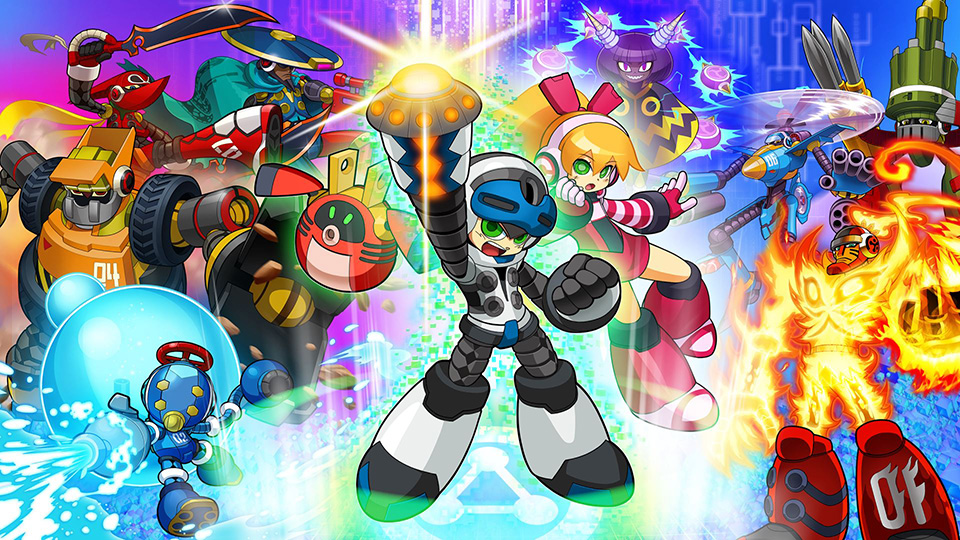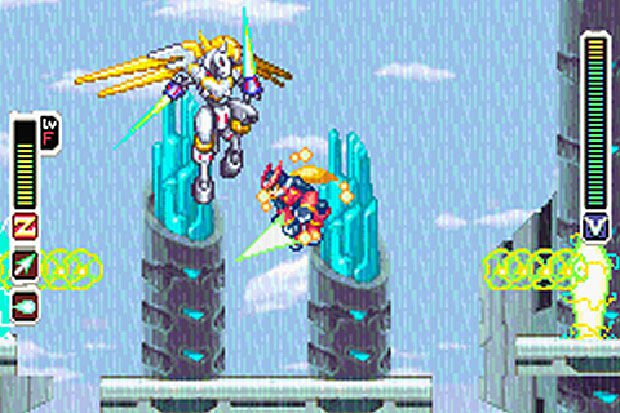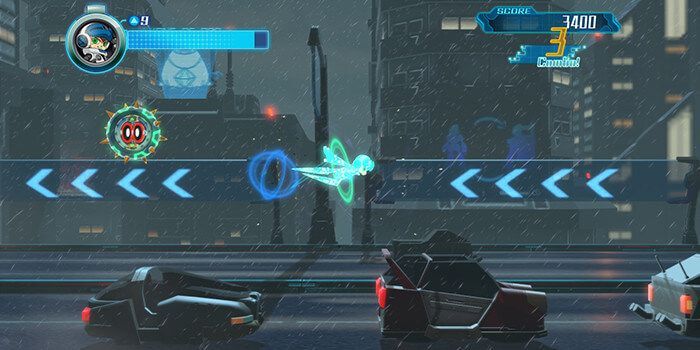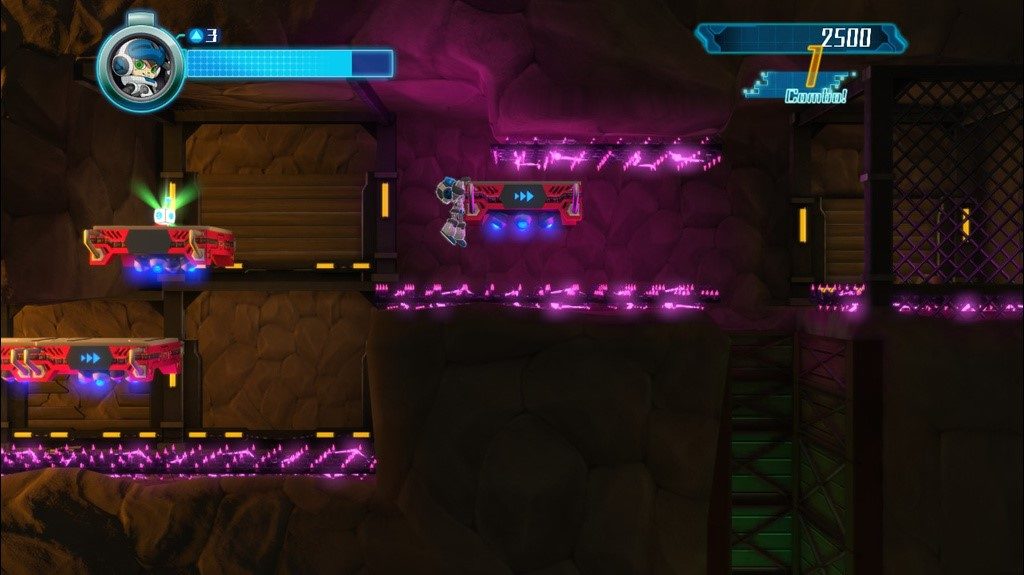Last updated on June 30, 2016

Mighty No. 9 is, simply put, a Inti Creates Mega Man game. Whether or not that appeals to you rests purely on whether that previous sentence made any sense to you at a glance. To which you might say: huh? What’s an Inti Creates?

Inti Creates was a company formed in 1996 out of ex-Capcom employees who wanted to go “independent”, so to speak, and make the kind of video games they liked. Unfortunately, the company didn’t experience much in the way of success with their original properties, and it didn’t look like the company would last a decade. Yoshihisa Tsuda, the company’s vice president, wanted to make a Mega Man game – at that time, if you wanted to do something badly enough, you simply attended every trade show possible and bludgeoned the guy in charge of that franchise. Tsuda eventually prodded Keiji Inafune enough that Inafune requested a proposal from the young upstart company, and they began to work on what became the Mega Man Zero franchise (for the purist, just replace “Mega Man” with “Rockman”).
Think of it this way: Inti Creates earned free reign over the new spinoff, because Inafune proposed the project as a commission, so the game became a Mega Man game fitted toward the preferences of Mega Man veterans. That means a whole lot of things were added to the final product which became, shall we say, Inti Creates trademarks:
- A high difficulty curve, usually assuming the player already knew the basics of Mega Man games and would be willing to learn new mechanics on the fly.
- A fast-paced game with lots of dashing, emphasizing speed runs throughout levels in the most efficient way possible.
- A mixture of ranged and melee combat, with the player needing to decide which attack would be most beneficial to playing through the stage in a great rush.
- Very, very precise platforming that are seemingly designed to require just nailing the exact jump distance and range of the player character.
- Tons and tons of new weapons and toys to play with, whether they came through beating bosses or (in later games) simply exploring a fair bit. You’re encouraged to use the new weaponry to figure out more efficient means of traversing stages, unsurprisingly (i.e., it’s not optional, like in other Mega Man games).
- Hearkening back to classic Mega Man games, when you lose all your lives, you go back to the beginning of the level. In other words: lives actually mean something. The original Mega Man Zero was even more punishing, with a convoluted Save and Continue system that required reloading from a previous save point every time. That same spirit that demands consistency still applies with most of their games, even Mega Man 9 and 10.

All of these elements make Mega Man Zero a unique spinoff franchise, one that you either loved or hated. They demanded precision for Mega Man veterans, and on that note they delivered – but, some people really don’t want that out of their Mega Man games, apparently. Admittedly, there are moments where the games felt rather unfair, with plenty of instant death moments, but that derives more from carelessness and reckless abandon as the player moves as fast as possible. You’re supposed to move quickly but cautiously, and that’s quite a lot to demand, I think.
And that’s exactly the problem Inti Creates created (hur hur) with Mighty No. 9 – due to Inafune’s Kickstarter presence and influence, everyone expected an Inafune-style Mega Man from the late 1980s and early 1990s. Unfortunately, everybody sorta missed that Inafune has never directed a video game – he designs, produces, and writes, but he never actually makes the games themselves. This is important, because this means all the games we attribute to Inafune only have a dash of his ideas for what makes a game a “Mega Man” game. In that sense, Comcept only handles the overarching design – Inti Creates handled the nitty-gritty of Mighty No. 9’s development, and boy does it ever show!

All the design elements above appear in Mighty No. 9 with great prominence, so I won’t go over them here (you’ll just have to trust me on that one). Still, there’s plenty to digest here. Beck’s dash, AcXelrate, functions in two different senses here. First, it lets you move pretty fast, obviously, and you can control its direction for the duration of the dash (and even immediately dash downward to land on a tricky platform). You can dash an unlimited amount of times, even in the air, so the complexity of the platforming challenges compensate for the ability to stay in the air for so long – adding instant death sections feels “cheap”, but they’re often clearly marked via purple electricity, thus making them easy signposts to determine the danger in a particular section. Note that the typical Mega Man invincibility after getting hit won’t save you from these traps – mere contact with them will kill you regardless of your current state
The more important ability of AcXelrate, however, is the “absorption” part. Simply put, hitting enemies with your standard projectiles (no charge shot, at least for the default cannon) or enemy weapons won’t kill them very fast. However, hitting an enemy enough times will make them turn a colorful shade of green, purple, or something else. That’s your cue to, quite literally, dash through them. With a pleasant screen pause and sparkle sound, the enemy immediately disappears, and you get all sorts of benefits like attack power up, higher defense, or even energy tanks! However, you only obtain said benefits if you dash through enemies within a very short period of time – otherwise, they simply disappear.

Dashing through enemies in that specific time frame builds up your “combo”, which is one of the main ways Mighty No. 9 distinguishes itself from Mega Man by returning to the original game’s arcade scoring. Over time, dashing through enemies successively as fast as possible gives you a very high score, and makes Beck more and more powerful; a good player can literally barrel through a stage, constantly shooting and dashing through enemies while traversing difficulty obstacles. It’s a surprisingly holistic system that encourages incredibly aggressive play, as taking damage doesn’t even drain the combo meter much – only hitting enemies with the dash long after they become vulnerable to it is the only way to really mess up. Eventually, you’ll be memorizing enemy layouts and the like to know how many shots it takes to weaken an enemy, or whether a particular boss weapon will weaken an enemy faster. Simply put, when the system works, it feels pretty exhilarating. It nails the “flows” concept of Sonic games, while being slow enough that human reaction times can, you know, react to what’s happening on screen!
